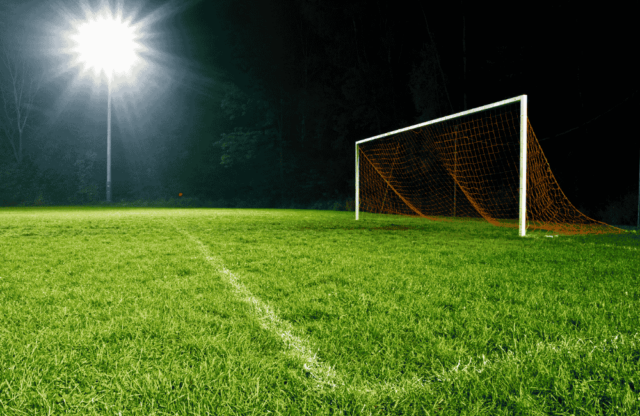We get it. You have a lot on your plate, but that doesn’t mean you can cut corners on the little things. Facility maintenance may seem mundane — but the truth is, field maintenance is more important than you might think. And it requires more effort than you might think.
Though we’ve already discussed the debate over grass versus turf fields, this guide covers maintenance and upkeep for both. Keep reading to discover the right way to care for your fields:
Grass Fields
Grass fields require a bit more of a strategic maintenance plan, as they need year-round strategy to keep them in top condition. Without proper upkeep, grass fields can become patchy, compact and unsafe for players.
Spring (preparation and growth)
- Begin aeration to relieve soil compaction and improve root growth.
- Overseed any bare patches to encourage thick, uniform turf.
- Apply fertilizers rich in nitrogen to promote healthy growth.
- Establish a consistent watering schedule based on field usage and climate.
Summer (intense growth & wear management)
- Mow frequently at an optimal height (typically 2.5-3 inches for sports fields).
- Deep-water fields early in the morning to avoid fungal growth and evaporation loss.
- Rotate practice areas to minimize excessive wear on high-traffic zones.
- Address pest control issues, as summer heat attracts invasive insects and weeds.
Fall (slowing growth & heavy usage)
- Increase aeration and topdressing to keep soil loose and improve drainage.
- Apply a slow-release fertilizer to strengthen turf before winter.
- Repair goal areas and high-traffic zones with quick-germinating grass seed.
- Establish field rotation plans for fall sports like football and soccer.
Winter (dormancy & protection)
- Avoid field usage when frozen or overly wet to prevent compaction and damage.
- Apply a light layer of sand or compost to protect roots from freezing.
- Perform final aeration before deep winter to encourage root health.
- Store equipment properly and plan for upcoming renovations in the offseason.
Additional best practices
- Regular soil testing: Monitor pH levels and nutrient content to ensure grass gets the right balance of fertilizers.
- Irrigation system maintenance: Check for leaks, adjust sprinkler heads and ensure even water distribution.
- Pest & weed management: Implement integrated pest management (IPM) strategies to prevent infestations.
Turf Fields
Synthetic turf has become a popular choice for its durability and lower requirements — but that doesn’t mean it doesn’t also need intentional care and maintenance to ensure safety and performance.
Daily & weekly maintenance
Brushing & grooming
- Use a drag brush to evenly distribute infill and maintain a uniform surface.
- Prevent matting and uneven wear by alternating grooming directions.
Debris & contaminant removal
- Clear litter, leaves, and organic matter to avoid contamination and infill displacement.
- Use a specialized vacuum or blower for hard-to-remove debris.
Field inspections
- Check for loose seams, tears, or exposed backing that could pose safety hazards.
- Monitor infill levels, ensuring they remain consistent to prevent hard spots.
Monthly & seasonal maintenance
Infill redistribution & top-offs
- Add rubber or sand infill as needed to maintain shock absorption.
- Rake and spread infill evenly to reduce low spots.
Disinfection & sanitation
- Apply antimicrobial treatments to prevent bacterial growth, especially in high-contact areas.
- Use mild detergents or specialized cleaners for removing sweat, blood, and beverage spills.
Temperature control (summer months)
- Water down the surface before games or practices to reduce excessive heat buildup.
- Encourage teams to use shaded benches and cooling stations.
Annual deep cleaning & repairs
- Power brushing: Conduct deep brushing to decompact infill and restore fiber elasticity.
- G-Max testing: Measure shock absorption and ensure the surface meets safety standards.
- Seam & edge repairs: Fix loose seams, wrinkles, or curling edges before they become hazards.
Extending turf lifespan
- Restrict non-athletic use: Limit vehicles, heavy equipment, and non-sports activities that can damage fibers.
- Proper footwear enforcement: Encourage use of molded cleats instead of metal spikes to prevent excessive wear.
- Post-event cleanup: Require teams and staff to remove trash and debris immediately after events.
What’d We Miss?
Have a go-to maintenance tip or question we didn’t cover? Chime in below




